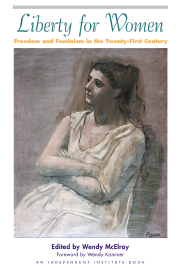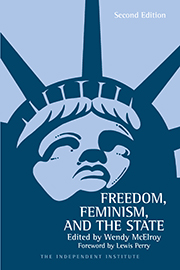On February 28 a Reuters news story quoted Zhao Baige, the Chinese vice minister of the National Population and Family Planning Commission (NPFPC), as indicating that the People’s Republic of China might change its “one-child policy.” That population-control policy limits the number of children Chinese couples are legally permitted to have. The default number is one child, but China’s actual birth rate is estimated at 1.8 children per couple because of exemptions and lawbreakers who are often aided by the widespread corruption of bribable officials.
By February 29 the New York Times, International Herald Tribune, and several UK papers quoted Zhao and speculated that the reason behind a loosening of policy was China’s urgent need for more young people who could be taxed in the future and otherwise care for China’s huge aging population. The NPFPC rapidly quashed the rumor of impending changes, and in a March 5 speech, Chinese Premier Wen Jia Bao specifically affirmed China’s intention to retain its current birth-control policy.
There are several reasons why the news story spread so quickly. The one-child policy has stirred worldwide controversy both for its violation of civil rights (including the forced abortion of “extra” children) and for its unintended consequences (for example, a preference for sons has created a sex ratio of almost 120 boys to every 100 girls born).
Moreover, the specter of world overpopulation has been a political hot button for decades; an alleged inadequacy of food supplies is, perhaps, the most common argument advanced for mandatory population control. In a New York Times article titled “A Global Need for Grain that Farms Can’t Fill” (March 9), David Streitfeld wrote, “Everywhere, the cost of food is rising sharply. Whether the world is in for a long period of continued increases has become one of the most urgent issues in economics.”
If the price of food continues to rise and if food riots like the recent ones in Haiti spread, then calls for population control will almost certainly increase and China’s one-child policy will be scrutinized for signs of success or failure.
In fact, the one-child policy has been a devastating failure that was based on a shaky assumption: namely, that the world is overpopulated, and so reproduction must be controlled. Additionally, “one-child” is an example of a social-engineering program that was launched to correct the unintended consequences of an earlier social-engineering program that encouraged large families. Indeed, China has recently launched yet another program called The Care for Girls program. This is a social program introduced to remedy a social program that was introduced to remedy a social program. (More on this below.)
Let’s grant for the moment and for the sake of argument that the world is overpopulated. Can social engineering cure the “problem”?
Social engineering occurs when a centralized power tries to manipulate or override people’s preferences to make them behave according to an artificial social blueprint. It is the opposite of allowing a culture to evolve naturally according to the preferences of individuals, which are often based on economic factors, such as what they can afford. Social engineering imposes rules, sometimes by dangling carrots, sometimes by wielding sticks.
In pursuing conflicting population policies, China has mixed carrots and sticks for over half a century now.
In a 1949 speech titled “The Bankruptcy of the Idealist Concept of History,” the then-leader of Communist China, Mao Zedong, declared, “It is a very good thing that China has a big population. Even if China’s population multiplies many times, she is fully capable of finding a solution; the solution is production. The absurd argument of bourgeois Western economists like Malthus that increases in food cannot keep up with increases in population was not only refuted long ago by Marxists, but has also been completely exploded by the realities in the Soviet Union and the liberated areas of China after the revolution.”
To Mao a large population was “a very good thing” for several reasons; for one, it represented more labor power. The main reason, however, was Mao’s fear of an armed conflict with “the West”—specifically with the United States.
A Cold War between the communist East and the Western world had followed on the heels of World War II. Korea was a flashpoint; the nation had been divided into two zones, with the North being controlled by the Soviet Union and the South by the United States. Although those nations withdrew militarily, they left their respective zones well armed. On June 25, 1950, North Korea invaded the South. In response the United Nations sent troops to Korea to reverse the invasion and with the ultimate goal of assuming control of the North, which shared a border with China.
The Chinese counterattacked, and the conflict settled into a seesaw of military actions. This was the Korean War; it ended three years later in a stalemate that preserved the North-South division of the country.
There was a clear reason why a poorly equipped China was able to hold off the West: superior numbers. During the war the United States incurred an estimated 33,600 casualties; its UN allies 16,000 more. Chinese casualties are estimated at 900,000. Mao wrote, “In every battle . . . an absolutely superior force (two, three, four, and sometimes even five or six times the enemy’s strength), encircle the enemy forces completely, strive to wipe them out thoroughly, and do not let any escape from the net.” The strategy became known as “the human wave tactic.”
During the 1950s and ’60s, Chinese women were encouraged to reproduce and given awards for doing so. Advocates of population control were sometimes imprisoned although family planning became more acceptable as the ’60s evolved. Thus China experienced a massive increase in population. As a result, by the 1970s family planning had displaced the admonition to reproduce, but the policy was not coercively enforced except on the authority and discretion of local officials.
The One-Child Policy Is Implemented
In 1979, three years after Mao’s death, the new leader of China, Deng Xiaoping, announced the “one-child policy.” Vice Premier Chen Muhua described the policy as one “of encouragement and punishment for maternity, with encouragement as the main feature. . . . Parents having one child will be encouraged, and strict measures will be enforced to control the birth of two or more babies. Everything should be done to insure that the natural population growth rate in China falls to zero by 2000.”
The policy was enforced nationwide in 1981 and has remained the law of the land since, although significant changes have occurred.
What hasn’t changed, however, is that China regulates and controls the procreation of its citizens more strictly and universally than any nation except, perhaps, communist Romania under Ceausescu.
From its outset, the one-child policy has been criticized for violating the basic human right to reproduce and for the brutal manner in which it was implemented. Moreover, it has been called a form of “genocide against minorities,” especially against the Uyghur peoples in the Eastern Turkistan regions, who are politically unpopular because they seek an independent homeland.
More pragmatic criticisms of the policy revolve around its unintended negative consequences. One of the consequences was well expressed by Richard Jackson, a demographer at the Center for Strategic and International Studies in Washington, D.C. Jackson explained, “You have the prospect of 400 million Chinese elders, age 60 and over, by 2040, 80 percent of whom, do not have any formal retirement pension, either public or private, most of whom won’t have access to government-financed health care. They’re depending on the extended family, but the government told them not to have children, or not to have more than one—or, in some cases, two.”
In short, each “only child” might become solely responsible for two aging parents and as many as four grandparents; known as the “4-2-1” problem, it is a responsibility that many or most of the “one-child” generation may be unable to meet.
The most publicized negative consequence, however, is the severe skewing of the population toward males. The Chinese are known for having a high preference for sons. This preference has resulted in a high rate of female infanticide (and, later, sex-selective abortions) to remove first-born daughters and, so, to clear the legal path to have a son. According to China’s official news agency, 119 boys are now born for every 100 girls; the ratio in natural circumstances is 103 to 107 boys for every 100 girls. By 2020 China may contain 30 to 40 million restless bachelors—known in China as “bare branches”—and worried observers predict everything from a steep increase in rape to wars aimed at securing brides.
In recognition of the problem, China adopted a significant change to the one-child policy in the mid-1980s. In the rural areas, where survival often requires hard labor and males are thus especially valued, China allowed a second child if the first born was either female or disabled. This evolved into what some now claim is a de facto two-child policy for the countryside. Nevertheless, the sex skewing seems to continue relatively unabated.
The gender imbalance in China is what the social theorist F. A. Hayek called an “unintended consequence.” Every act has unforeseen and unintended results that may determine its impact far more than the act’s intended goal.
Hayek saw at least two practical problems with social engineering, both of which involve such unintended consequences. The first problem speaks to the nature of a healthy society. If left to the ingenuity and preferences of individual members, society tends over time to naturally evolve answers to the problems confronting it. For example, if there is a shortage of food, families tend to limit themselves to a supportable number. But when government begins to dictate choices, it prevents individuals from adapting and evolving solutions. Society loses the resilience it requires to solve problems.
The second practical difficulty with social engineering was “the knowledge problem.” In accepting the 1974 Nobel Prize for economics, Hayek explained, “The recognition of the insuperable limits to his [the bureaucrat’s] knowledge ought [to guard] the student of society . . . against becoming an accomplice in men’s fatal striving to control society—a striving, which makes him not only a tyrant over his fellows, but which may well make him the destroyer of a civilization which no brain has designed but which has grown from the free efforts of millions of individuals.”
A centralized bureaucracy cannot control the outcomes of choices made by hundreds of millions of people, nor can it know all the results of its policies. All a bureaucracy can do is impose policies. The more important the area of life being controlled is—such as reproduction—the more draconian the imposition must be to render even minimal compliance. The longer social control is imposed and the more policies are introduced, the greater the number of unintended consequences, such as the skewing of the gender ratio
As noted, the proposed remedy for sex skewing in China is the introduction of yet another social-engineering policy, exemplified by the Care For Girls (CFG) program. The administration of CFG in East China’s Anhui province is probably typical. There, CFG was initiated in 2000 and includes lecturing the populace against sex bias, offering loans to families with daughters, training women to become wage earners, and checking girls for signs of abuse. The unintended consequences of the relatively new CFG program are not yet apparent. The ultimate folly, however, is that the stated goal may require nothing more than leaving the situation alone. Simply by becoming scarce, girls have become more highly valued and, with a new appreciation of their importance to society, the role of women in China seems poised for redefinition. The Chinese government could best help by simply getting out of the way.
This is not likely to happen. The Chinese government continues to insist that it must control reproduction because the nation’s resources, especially its food and water, cannot sustain a large increase in the population.
Although the claim is not self-evidently true, it is rarely questioned because it conforms to the widely held and politically popular belief that the planet is overpopulated. Over the past decade polls have indicated that most Americans blame over-population for contributing to or causing an impressive range of social ills from pollution to illiteracy, from poverty to famine.
Overpopulation theory is often dated back to Thomas Malthus and his work An Essay on the Principle of Population (1798) in which he argued that resources grow linearly while population grows exponentially. Unless human reproduction was controlled, he believed, the population would be too large for the earth’s resources to support. Ironically, Malthus predicted that a tipping point and famine would occur in the mid-nineteenth century; this prediction came on the cusp of the world’s experiencing a vast expansion in the food supply due to the Industrial Revolution and advances in agriculture.
Since Malthus, many overpopulation zealots have made equally false predictions about the exhaustion of the planet. For example, Paul R. Ehrlich, author of The Population Bomb (1968), wrote, “The population of the U.S. will shrink from 250 million to about 22.5 million before 1999 because of famine and global warming.”
Current fears of overpopulation may be equally groundless. One of the difficulties in judging the matter, however, is that no one seems to have a good definition of what is the “proper” population; that is, how many people can the earth support without calamities like mass starvation?
Even a good guess at an answer would require information that is difficult or impossible to secure. For example, it would be necessary to calculate what percentage of massive human tragedies, such as famine, are due to entirely artificial and imposed factors like war. The current shortage of rice in Asia, for example, is not due to natural factors but to a constellation of artificial ones such as the diversion of food crops like corn into the production of ethanol. This diversion has driven up the global price of the crops that serve as alternatives, such as rice. Whatever percentage of hunger is due to artificial factors should not be blamed on limitations of the earth.
Moreover, recent developments in agriculture, like the previous Green Revolution in the twentieth century, may dramatically increase food resources. For example, recently developed biotech crops both increase productivity and reduce the need for insecticides.
Thus the one-child policy has not only been disastrous both in terms of human rights and practical consequences for generations to come; it is far from clear that its rationale is even valid.
In 1999, analyst Stephen Moore, formerly of the Cato Institute, wrote in “Defusing the Population Bomb”: “[W]e are nowhere near running out of room on the planet. If every one of the 6 billion of us resided in Texas, there would be room enough for every family of four to have a house and an 1/8th of acre of land—and the rest of the globe would be vacant. . . . The dreaded population bomb that emerged as a worldwide obsession in the 1960s and 1970s has been all but defused. The birthrate in developing countries has plummeted from just more than six children per couple in 1950 to just more than 3 per couple today. The major explanation for smaller family sizes, even in China, has been economic growth, not condom distributions or coercive birth control measures.”
Moore commented on China specifically in another article, “Don’t Fund UNFPA Population Control” (2000), “To this day no one knows precisely how many babies and women have died at the hands of the population control fanatics in China. What we do know is that this program will go down in history as one of the greatest abuses of human rights in the 20th century.”
Moore concluded, “[T]he cause of world hunger and environmental disasters in the world today is not too many people. It is too much statism.”









